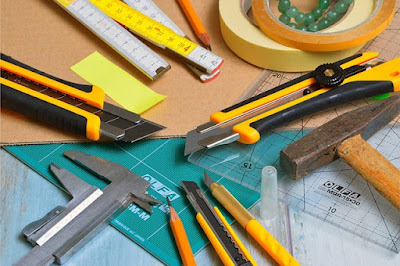Japanese Joinery Guide: Essential Techniques + Free Woodworking Plans
 |
| Click To Watch The Video |
Japanese joinery is celebrated worldwide for its precision, beauty, and extraordinary craftsmanship. Rooted in centuries-old traditions, this technique enables woodworkers to create incredibly strong joints without nails, screws, or metal fasteners. Whether you’re a seasoned craftsman or a beginner eager to explore new woodworking methods, mastering Japanese joinery will elevate your projects to a whole new level.
In this guide, you’ll discover essential joinery techniques, must-have tools, and tips to help you get started on this rewarding craft.
Why Learn Japanese Joinery?
Japanese joinery is more than a woodworking method — it’s an art form that combines functionality and aesthetics. Here’s why you should consider adding these techniques to your skillset:
-
Unmatched Strength and Durability
Japanese joints are designed to withstand stress and heavy loads, making them perfect for furniture, cabinetry, and structural projects. -
Beautiful, Seamless Appearance
The joints fit together so precisely that they create clean, elegant lines — turning every piece into a visual masterpiece. -
Sustainable Craftsmanship
By avoiding nails and screws, you reduce the use of metal fasteners, promoting eco-friendly woodworking rooted in tradition.
Key Japanese Joinery Techniques
Here are some of the most iconic and practical Japanese joinery methods to explore:
1. The Dovetail Joint
While dovetail joints exist worldwide, the Japanese style is known for its intricate detail and strong interlocking design — ideal for drawers and boxes.
Mastery Tips:
-
Measure carefully to ensure tight, precise angles.
-
Avoid gaps that weaken the joint or overly tight fits that can split the wood.
For detailed step-by-step instructions, check out our guide on mastering dovetail joints.
2. Mortise and Tenon Joint
A classic woodworking joint, the Japanese mortise and tenon is exceptionally strong and often reinforced with wooden pegs.
Mastery Tips:
-
Ensure perfect alignment of the mortise (hole) and tenon (protrusion).
-
Use sharp chisels for clean cuts and a mallet for gentle assembly.
If you want to dive deeper, here’s a helpful tutorial on creating strong mortise-and-tenon joints.
3. Japanese Box Joint (Kumi-tsugi)
A variation of the box joint, this interlocking finger joint is excellent for creating strong corners.
Mastery Tips:
-
Cut each finger precisely for a snug fit.
-
Patience and practice are key.
4. Japanese Scarf Joint
Used for joining two pieces end-to-end, especially in beams and posts.
Mastery Tips:
-
Cut angled mating surfaces accurately.
-
Reinforce with wooden dowels or pegs to ensure stability.
Essential Tools for Japanese Joinery
To master these techniques, you'll need some specialized tools alongside basic woodworking essentials:
-
Japanese Saw (Nokogiri):
Choose from the ryoba (double-edged) or kataba (single-edged) saw for clean, accurate cuts. -
Chisels (Nomi):
Sharp and durable chisels are crucial for mortises and refining joints. -
Wooden Mallet (Kongō):
Used for striking chisels without damaging tools or wood. -
Marking Tools:
Precision marking gauges, squares, and Japanese marking knives (kiri-dōgu) help ensure exact cuts. -
Japanese Plane (Kanna):
For creating ultra-smooth surfaces that require minimal sanding.
Getting Started with Japanese Joinery
Ready to try Japanese joinery? Here are some practical tips:
-
Start Simple:
Practice basic joints like dovetails or box joints before moving to complex ones. -
Focus on Precision:
Accuracy in measuring and cutting is crucial for tight-fitting joints. -
Invest Gradually:
Begin with basic tools, then add specialized equipment as your skills improve. -
Join a Community:
Learn from experienced craftsmen in woodworking forums and local groups.
Ready to Create Stunning Projects?
Mastering Japanese joinery opens the door to crafting beautiful, durable woodworking projects that stand the test of time. Whether you’re just starting out or already experienced, these techniques add unmatched value and artistry to your work.
🔨 Get Your Free Woodworking Plans Today!
Start building your next project with expertly designed plans featuring Japanese joinery methods.
FAQ
What is the best tool for making a dovetail joint in Japanese joinery? The best tool for creating a dovetail joint is a Japanese saw, which allows for precise cuts. A marking gauge and chisels are also essential for accurate work.
Can I learn Japanese joinery as a beginner? Yes! Many woodworking plans are designed for beginners, with step-by-step instructions for basic Japanese joinery techniques. Start small and work your way up.
Do I need specialized tools for Japanese joinery? While specialized tools like a Japanese saw and chisel are ideal, you can also use basic woodworking tools to get started and gradually invest in more advanced tools.
How can I ensure my joints fit tightly? Precision is key. Make sure to measure and mark each part of the joint carefully. Use a mallet to tap the pieces together gently without damaging the wood.
Where can I find woodworking plans for Japanese joinery? You can access detailed woodworking plans, including plans for Japanese joinery techniques, by downloading free woodworking plans here.





.jpeg)

.jpeg)
